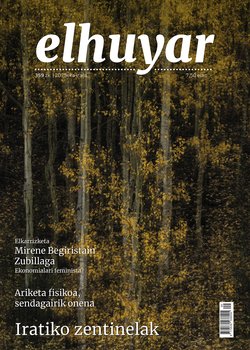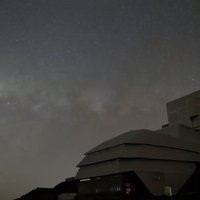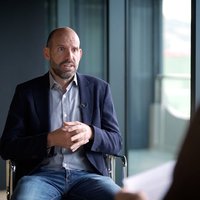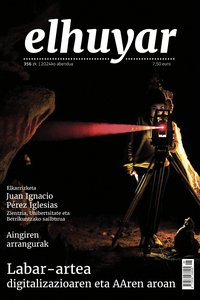Art in new media
OLAIA CALONGE, Exhibition Manager:The works that we will see in this exhibition use materials used in industry, electronics or other fields for the benefit of the art.
OLAIA CALONGE, Exhibition Manager: This includes net-art, for example: art that is made exclusively for the computer. Bio-art, which mixes biology and art. Robotics is more than a discipline.
OLAIA CALONGE, Exhibition Manager: Title Silicon Dreams Why? Because an element that everyone has is silicon. There is silicon in the electronic or technological plates, and since all these works of art depend on technology or electronics, that is why the title.
OLAIA CALONGE, Exhibition Manager: 10 works of art have been selected; they have been selected by a committee that included scientists, technologists and artists, who have chosen these 10 themselves.
OLAIA CALONGE, Exhibition Manager: A work of art by the Japanese Sachiko Kodama. In addition to being an artist, he is an engineer.
OLAIA CALONGE, Exhibition Manager: There are two golden drums, inside of which there is an electromagnet and the artist, through a computer system, controls the force that these electromagnets exert. Accordingly, the liquid contained in a dish moves or changes shape.
OLAIA CALONGE, Exhibition Manager: This liquid is also special, it is ferrofluid; it is a liquid made of alloy of various metals, and this liquid was invented by NASA. NASA mainly uses it in spacecraft, and dampers, but in this case the artist has used it for an aesthetic purpose.
OLAIA CALONGE, Exhibition Manager: Crista is a biologist and Logan is a technologist.
OLAIA CALONGE, Exhibition Manager: When they created this work of art, they had an idea in mind. And it's how plants are sometimes able to perceive presences.
OLAIA CALONGE, Exhibition Manager: Science has not yet really explained how plants are capable of perceiving these presences. And based on this idea in some way, based on this presence that plants receive, they made this work of art.
OLAIA CALONGE, Exhibition Manager: Then, when those who come to see it approach the plants and start touching them, the plant perceives the visitors and then they represent their image on a screen.
OLAIA CALONGE, Exhibition Manager: Here, the flowerpots are special; the flowerpots have a kind of antenna. This antenna is attached to the roots, so when touched, the plant perceives more pressure, and then the representation appears. The flower pot has the end of this antenna at the bottom, and it makes the connection with the whole computer system, and in this way the representation is obtained.
OLAIA CALONGE, Exhibition Manager: He tries, with this work of art, to repeat the behavior of fireflies in nature
OLAIA CALONGE, Exhibition Manager: They are things or objects or animals that, individually, are useless or nothing at all, but they are an indispensable part of a group.
OLAIA CALONGE, Exhibition Manager: Around these fireflies they have some kind of towers from which infrared signals are sent.
OLAIA CALONGE, Exhibition Manager: Then, when this tower starts sending infrared rays, a firefly, the nearest one, picks it up, and as a result it begins to give light. We see this green light turning it on and off, turning it on and off, which at the same time contaminates the next, and then the next, and then the next, and then the next, and then the next, and finally reaches a point where synchronization is achieved by contaminating one another.
Buletina
Bidali zure helbide elektronikoa eta jaso asteroko buletina zure sarrera-ontzian











